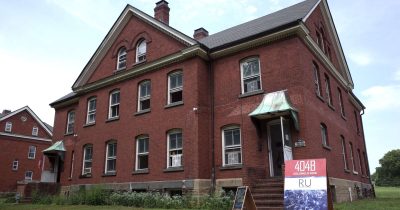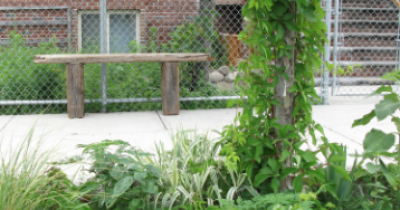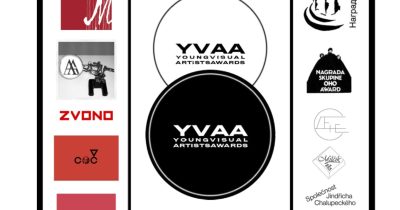Burning in Water Gallery (507 West 27th St, New York, NY 10001)
Opening Reception: Thursday, September 13 6-8pm
Exhibition dates: September 13 – November 3, 2018
Burning in Water – New York is pleased to present an exhibition of new work by Philadelphia-based artist Jesse Krimes: Strange Roots. Encompassing free-standing sculptures, mobiles and installations, Strange Roots is the artist’s second solo show with the gallery. The artworks in Strange Roots embody a curious hybridity of both materials and processes, incorporating digitally-printed plastic substrates, botanicals and other natural materials and handblown glass. Strange Roots will be the inaugural exhibition in our new gallery space at 507 West 27th Street.
Krimes began the investigations that would ultimately result in the artworks in Strange Roots with extensive research into digital image search algorithms – employing Google image search queries to examine how an array of socio-political, historical and culture themes were reflected back visually to the user through the prism of the digital ecosystem. For example, he would probe how internet search tools would register imagery associated with a term such as Of Beauty and Decay; or, not (brown 1) [detail], 2018. “decay.” He then traced how specific themes, embodied as a series of digital images, would evolve as he continued to pursue them along a path dictated by the relational infrastructure of the internet. Employing a sort of digital archaeology as his methodology, Krimes conducted broad experimentation with how his inquiries into complex or fraught subjects would be registered as a seemingly endless, iterative stream of algorithm-mediated imagery. The objective guiding this process was Krimes’ interest in discerning correlations between the organization and dissemination of visual content on the internet and societal values, perceptions and norms. Krimes characterizes the process as “a means to excavate the underlying structures of our digital landscape and its function as a space that reconditions our perceptions of reality.”
Conceptually, Krimes came to consider the bodies of visual information he uncovered as products of vast digital algorithmic networks all “feeding into a Leviathan,” which he defines as “the body politic as reflected through clicks, search results and social values.” In attempting to map the contours of this “Leviathan,” Krimes became acutely interested in not only the prototypical imagery that tended to recur but also its inverse — imagery that was expected but failed to appear. Probing for fault lines, he would utilize compounded search topics, such as appending the adjectives “moral” or “societal” to his searches for images related to “decay” and “America.” Increasingly, Krimes’ overall perception was of a composite visual representation of society refracted through a digital prism that was grossly distorted in its Bowdlerization — an infinitely-elaborated depiction of America wherein references to war, slavery, subjugation, lynchings, oppression and atrocities are recessed from view. The original sins of our society, its “rot at the root,” are thereby expunged. Fundamental to this distortion is a near-literal process of digital white-washing, wherein seemingly all searches related to beauty appeared to be “depicted through a filter of whiteness.” Even when Krimes alter his search outcomes using “brown” or “black,” all queries associated with beauty seemed thwarted by a inexorable pull back towards consumerist-oriented depictions of white femininity.
Over time, Krimes’ search-image experimentation coalesced around two polar themes: “beauty” and “decay.” After compiling records of his inquiries as groupings of digital images, Krimes rendered the images on large-scale sheets of transparent plastic, which he would cut into fragments, bend and shape by melting with a torch, paint by hand and fuse or stitch together into three-dimensional forms. While serially-producing these objects, he gravitated towards miniaturization and increasingly came to conceive of these objects, which had originated in the parallel sphere of digital space, as “fruits” of either “beauty” or “decay.” As a means of reintegrating these objects into an analog environment, Krimes fused his digitally-produced “fruits” with natural elements, including large root systems collected from the predominantly rural area of Pennsylvania where he grew up, and found industrial objects. Many of the works also feature glass elements produced using traditional hand-blowing techniques. The natural elements in the sculptures are fused to the non-organic components with transitional features fashioned primarily from plastic. The resulting works, which Krimes characterizes as “sutured plants,” establish a simultaneity of dichotomies: natural vs. synthetic; beauty vs. dissolution; and mobility vs. stability. The sculptures function as self-contained systems within which beauty and decay exist as “chimerical manifestations” of each other. The intertwining of such disparate elements is a formal gesture intended to force an intimate confrontation between such apparent dichotomies so as to “challenge reductive understandings of complex systems.”
The works in Strange Roots represent continuing investigations into Krimes’ abiding interests as an artist, including how contemporary media representations influence our perceptions of individual and collective identities and the ways in which such perceptions shape or reinforce mechanisms of power and control within society and nominal conceptions of freedom and justice – processes that he broadly categorizes as “societal scaffolding.” For Krimes, such concerns are simultaneously broadly philosophical and intensely personal, with their origins reaching back to the six years he spent incarcerated. During his time in prison, a significant period of which was spent in solitary confinement, Krimes used his artwork as a means of scrutinizing the intersections between individual and collective identities, the impact of mass media on socio-cultural perceptions and the coercive power of the state. In Strange Roots, he centers these concerns largely on “the invisible cloud of the internet,” which he considers to be a space “where traces of social protocols, interactions and ghosts are captured, archived and processed through the lens of cultural value.” Noting the fact that the the term “Leviathan” literally means “to twine; to join” or (with an adjectival suffix ן” (-wreathed, twisted in folds,” Krimes re-envisions the Hobbesian force majeure with digital media increasingly assuming the role of “central nervous system” within a “monstrous body politic.”
Jesse Krimes is a conceptual artist who lives and works in Philadelphia. Krimes was awarded fellowships from the Robert Rauschenberg Foundation (2017); the Independence Foundation (2017); and the Ford Foundation’s Art for Justice initiative (2018)




